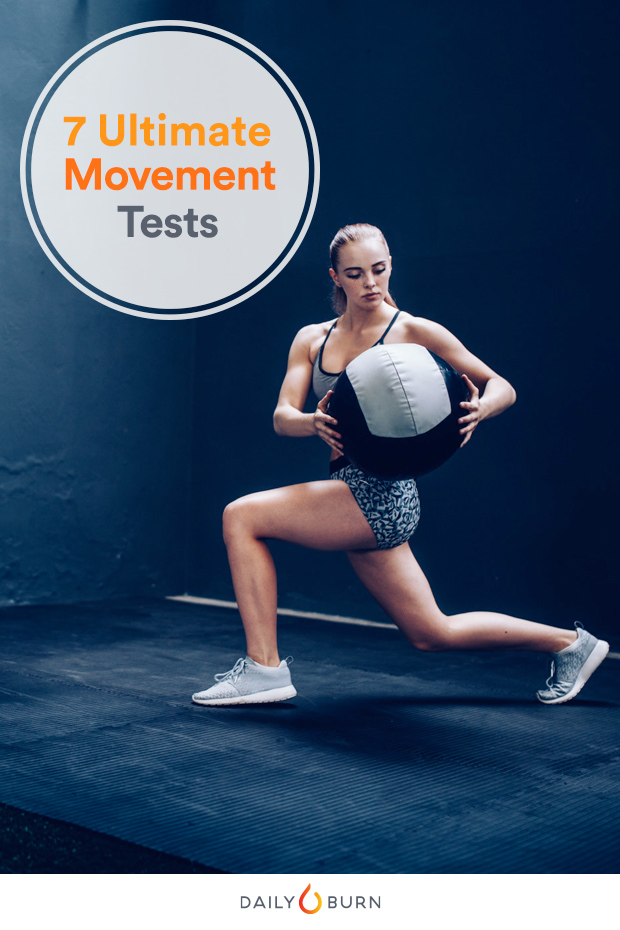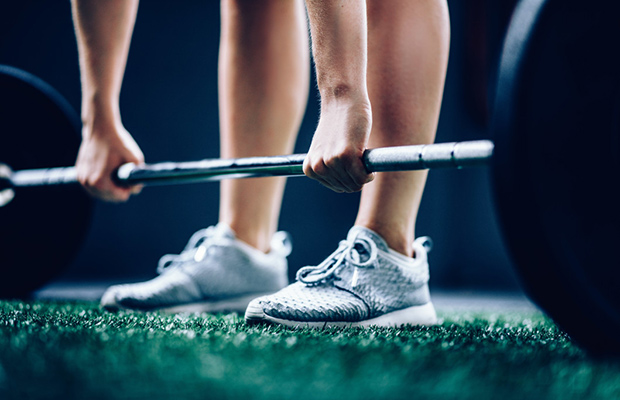
Squat, lunge, push, pull, hinge, twist, and walk: These make up the seven movement patterns that your body relies on to get ish done every day. And not just during a workout. Think about how you pull a box off a shelf, squat down to pick something up, or walk around all day.
But these movements have deeper roots in our wellbeing, says holistic coach and certified strength and conditioning specialist Jator Pierre, CSCS. To get the full picture, you’ve got to go back — way back. “If you look at it from an evolutionary perspective, we’d have to use all of these movement patterns to survive,” he says. Lunging to hunt, squatting to make a fire, or pushing to throw a spear. Today, life looks, well, very different. You probably spend much of your day hunched over at your desk, which compromises your ability to perform these very movement patterns.
RELATED: The 15 Most Underrated Exercises, According to Trainers
“If you can’t perform these movements correctly, your body thinks you have a lower ability to survive,” explains Pierre. Obviously, that’s not the case any longer. No one is asking you to spear your dinner when you could just get Whole Foods hot bar tonight. Still, because your body hasn’t yet caught up to modern day times, the inability to correctly move boosts stress — and thus inflammation. So, yeah, it’s a big deal.
There’s no time like the present to get these movement patterns on point. How do you fare? Try the seven self-assessment tests below, plus get tips to help you step your game up.
7 Functional Movement Patterns to Master STAT
1. Squat
Test Yourself: Lower into a squat, hips back, knees tracking over ankles and heels planted on the ground. Ideally, you would be able to lower into a full squat with your hips almost touching your heels. If you feel joint restriction as you go down, you may have a musculoskeletal imbalance, like tight calves.
Make It Better: Put a stability ball behind your back against a wall for support and lower down (it should feel pain-free). Also, tell yourself to “sit” instead of “squat,” which can help you maintain the right position throughout the move. (Also check out these seven tips to improve strength, depth and mobility in your squat.)
RELATED: 6 Squat Variations for Total-Body Strength
2. Lunge
Test Yourself: For the forward lunge, step forward with one foot and bend your back knee until it’s almost touching the ground. Are your knees and ankles stable — or are they shaking around? Does your knee drop in or out away from your body? Are you hunched over and unable to hold your chest or head up? Those are all indications that something is wrong with your lunge.
Make It Better: Watch yourself in a mirror to look for the deficiencies above, and practice lowering only half way down. Once you’ve mastered that, you can practice the bottom half of the movement — then put it all together. Also, be sure to stretch tight hamstrings, glutes and calves on the regular. (For starters, here are 15 stretches you should do every day.)
3. Push
Test Yourself: Get into a push-up position, lower your body to the ground and push back up. If you crunch over (head jutting out and shoulders rounding over) or your lower back sags, that’s a sign of lack of stability in your core and weakness in the stabilizing muscles of your back and pelvis.
Make It Better: First, work on holding high plank position (the top of your push-up) to build strength and stability. (When in doubt, check out these form tips.) From there, you can progress to a variety of push-up modifications — from wall push-ups to knee push-ups — before moving on to your toes.
RELATED: This Is How to Do the Perfect Push-Up (Even on Your Knees)

4. Pull
Test Yourself: Now, for the ultimate bodyweight challenge: the pull-up. Find a bar at the gym and try a pull-up (palms facing out) or chin-up (palms facing in). Chances are, if strength isn’t an issue, this movement will reveal some postural issues, too. “People tend to go into a dysfunctional posture,” says Pierre. That means at the top of the movement, shoulders are forward, spine is rounded, head is tucked in. (Not too different than what poor posture looks like seated at your desk.) This, to say the least, is the wrong mechanics, and it can reinforce this “hunching” position in your everyday life. Not only can that contribute to back pain, it can also inhibit breathing.
Make It Better: Start with other pulling exercises to build strength. For example, do horizontal bar reverse pulls (also called an inverted row). Using a bar that’s close to the ground, lie under the bar with feet straight out in front of you. Grab the bar and pull your chest up to the bar.
RELATED: How to Do a Pull-Up (Or Add More Reps)
5. Hinge
Test Yourself: It’s one of the toughest movements to master, but for that reason it can be the most rewarding. Grab a weighted bar or a dumbbell in each hand and attempt a deadlift (here’s how). Your feet should be wider than shoulder-distance apart as you hinge forward from your hips with a straight back to pull the weight up from the floor. Many people perform this with straight legs, but your knees should be bent 15 to 20 degrees in order for glutes to turn on and support your pelvis and spine, says Pierre. If you don’t feel this move fire up your glutes, your knees aren’t bent enough. It can also reveal a muscle imbalance, most commonly too-strong quads and weak glutes.
Make It Better: Start by practicing hip extensions on the floor (get on your hands and knees and raise one leg up behind you) to build up glute strength. These five glute bridge variations are also worth working into your routine.
6. Twist
Test Yourself: To assess your trunk rotation, start with a bodyweight wood chop. Stand with feet a bit further than shoulder width apart, bending knees slightly and keeping your chest up. Lift arms diagonally across your body toward the ceiling and bring them down to the opposite side of the body. Look at your ankles: Are they stable with feet flat on the floor or does the ball of your foot roll up? Can you maintain proper posture (chest up, spine straight) throughout the move? Do you feel any pain? (You shouldn’t.) If any of these issues rear their ugly heads, a rotational deficiency is likely to blame.
Make It Better: First, go for a lateral ball roll. Lay with your back on a stability ball with feet wide on the ground, holding a very lightweight bar across your chest. Take one step to the right with your right leg and step in with your left (you should roll slightly to your right). Repeat on the left side. If you feel the stabilizer muscles in your core light up, you’re doing it right.
RELATED: The Ab Moves You Aren’t Doing (But Should!)
7. Gait
Test Yourself: Sure, you walk every day — but how’s your posture while you do it? Is your head pushing forward from your collarbones? Are your shoulders rounded forward? Walk forward in front of a mirror. Does one foot flare out to the side just a bit? Or do your hips shake from side-to-side (particularly when you run)? That can signal an imbalance, a problem with hip mobility or a dysfunction in your core.
Make It Better: Awareness is half the battle with this one. As you move through space, draw your attention to bringing your shoulders back, chest up and feet pointed forward with each step.
RELATED: Is Your Mobility Holding You Back? The Functional Movement Screen
Making Every Movement Count
Since these essential movement patterns have such deep roots in your health and how you feel every day, Pierre suggests going back to the basics. He recommends Paul Chek’s book, How to Eat, Move and Be Healthy! because it provides additional tests you can take, such as a stretching and core test. By relearning how to move properly, not only will you help protect your body from injury, you’ll take strides toward reducing undue stress and inflammation. We’ve only got one body — so why not make moves to treat it right?
Not a Daily Burn member? Sign up at dailyburn.com and start your free 30-day trial today.
